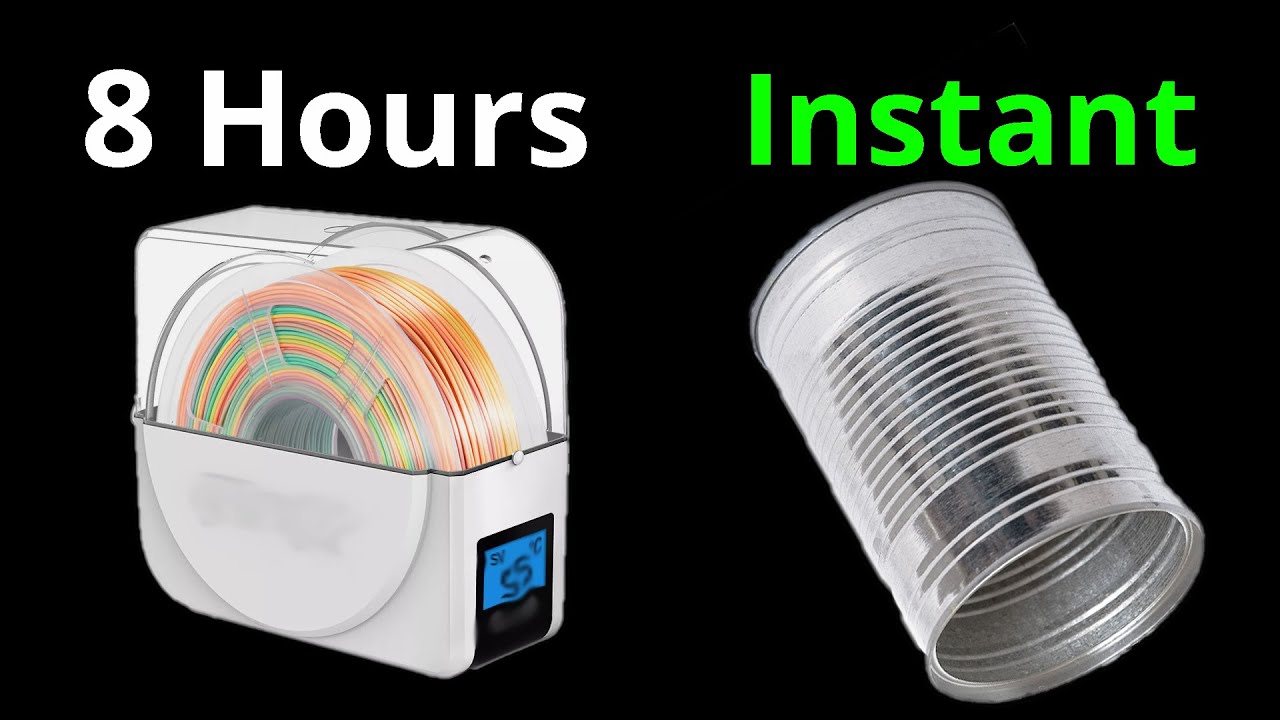Super simple prototype but if it works… Very cool idea!
This is a very good start. It will have limited effectiveness depending how exactly wet the filament is though, as the diffusion speed of water in plastic is low and it takes time to get the water actually out of the center to the surface to evaporate. The few minutes a filament sits in the inline dryer might be OK for surface moisture but will fail with wetter spools.
I think the ideal system would be to have a dry box that the heating unit and fan blow into, but then feed the filament out to the printer through a “stove pipe” that acts as the dry box exhaust. This way you’re still drying the whole spool over time but then get that “final blast” to ensure the surface is as dry as possible. Make sure to insulate all walls such that you reduce how much heat you lose as the air passes through.
Yeah, I’m definitely interested to see some experiments. I was surprised it worked as well as it did but if it does it’d be super useful
Argh finally someone tries the obvious solution. I was already considering it but was demotivated since it seemed so obvious and nobody seemed to have done it before.
This device could also probably be printed in PLA. I can’t wait until I get my lab power supply so I can give this a try with a wire coil heater.
Edit: you could even mount some PTFE tubing mounted below a heated bed and pass air through it. That way you could potentially get away without a heating element and re-use some power usually lost.



